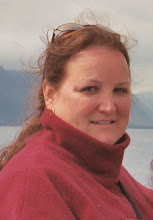

Do I stand out like a sore thumb?
It was a blast! I played photographer for my Asian friends, sometimes with 15-20 cameras lined up in front of me! I had been to SF in '89, '90, and '92, when I worked in summer programs for Lawrence Berkeley Labs, so it was neat seeing the changes.
Alcatraz

Golden Gate Bridge

Fishermans Wharf, home to Pier 39, Ghirardelli Square and the famous resident harbor seals. Crowds, trinket shops, chilly breezes off the harbor, street performers, t-shirt shops, food vendors and seafood restaurants, make up this tourist mecca.

Friends went crazy with the Ghirardelli chocolate!

AT&T Park, home to the Giant's Baseball Team

Finally departed SF on a DELAYED red (now double red) eye, slept ALL the way, got into Boston just in time to miss my flight to Presque Isle, and finally got to Madawaska at 6PM Thursday.
It's been an AMAZING fast four days!
Can't wait for June 20--back to SF for two days of orientation to Japan, then Tokyo on June 22. ESD programs in Japan, homestay, playing tourist, then joint meeting #2 with the Japanese counterparts. Back home to Madawaska July 6. Will post as often as I can!



